Zyxel N4100 - Access Point ... with printer
Are you tired of phone reviews? This Monday is something new.

Well, probably it’s already clear that this is not an ordinary access point, which distributes the Internet in the apartment for a laptop and phone. No, of course, it can work in this form, but it's like hammering nails with a hard drive.
N4100 is a specialized solution for organizing paid access to the Internet - a hotspot. In fact, very cool and thought out to the smallest detail. You can use this access point in any places where there are people who need access to the Internet - cafes, pizzerias, restaurants, hotels, hotels, airports, meetings of a large number of people.
The access point is supposed to connect to the Internet, and the printer to the access point. Moreover, they do not have to be directly connected - information is transmitted to the printer using standard protocols, and there can be routers or switches between the access point and the printer. Up to 10 pieces can be connected to one access point.
Well, of course, you can connect repeaters or individual access points to the router , if you do not have enough coverage.
► Zhelezyaka
The access point came to me in such a large box, which did not even fit entirely into the frame:

Included were: Disk, instructions and wall mounts.
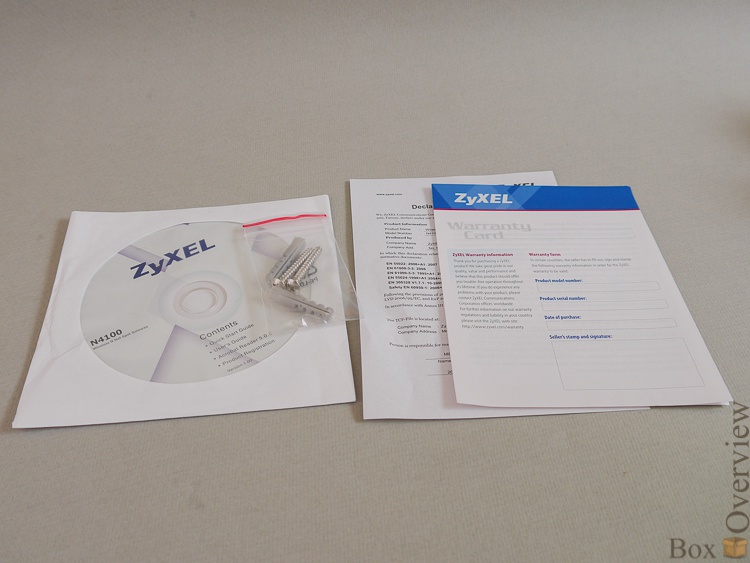
The instructions have a section in Russian that is good, but not very detailed, describing the first setup and activation.
Stickers ^ _ ^
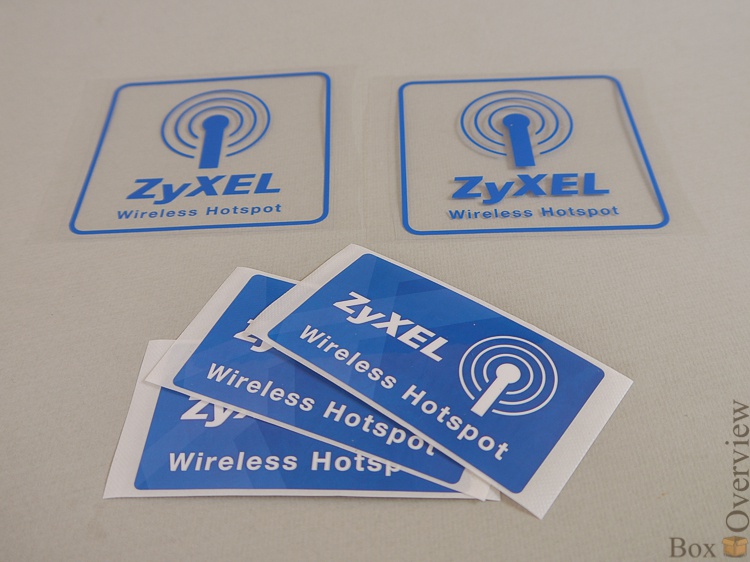
Two cables:

The access point itself:
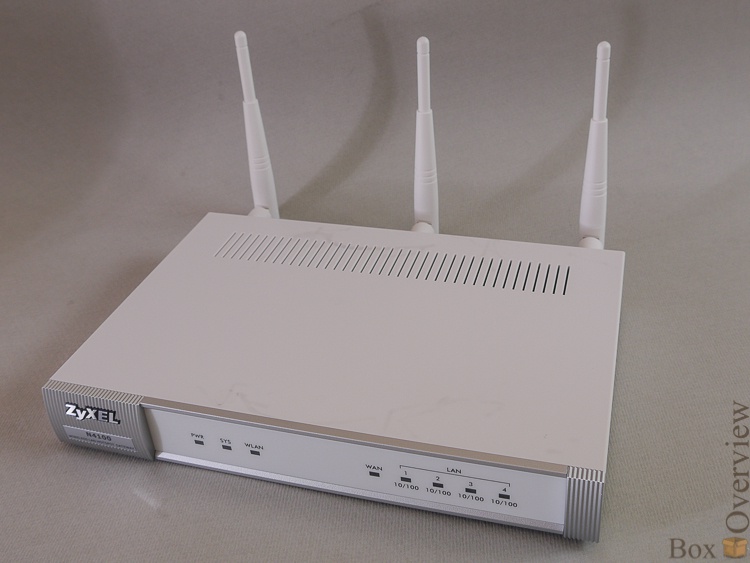
And the printer for it:

And two power supplies, of course. For the printer, at 5V:

And for the access point, at 12V:
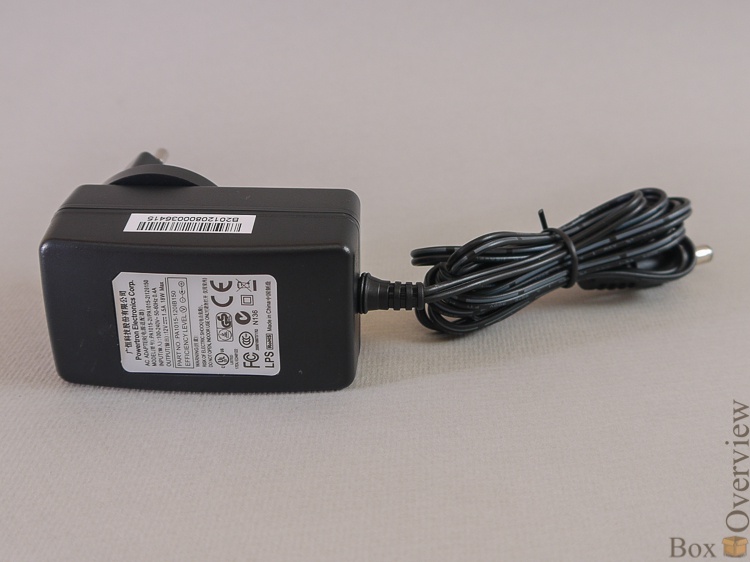
By the way, the plugs are not the same - burning the printer by including the wrong power supply in it will not work. It's nice that this is thought out.

The power supply for the TD is with a removable plug, you rarely see this solution:

But the printer has the usual one:

But, in any case, the main thing is that the plug is correct. And there are no problems with this.
The design of the access point is quite ordinary:

On the front panel there are LEDs for power supply, system operation (lights up after boot), wireless network activity:
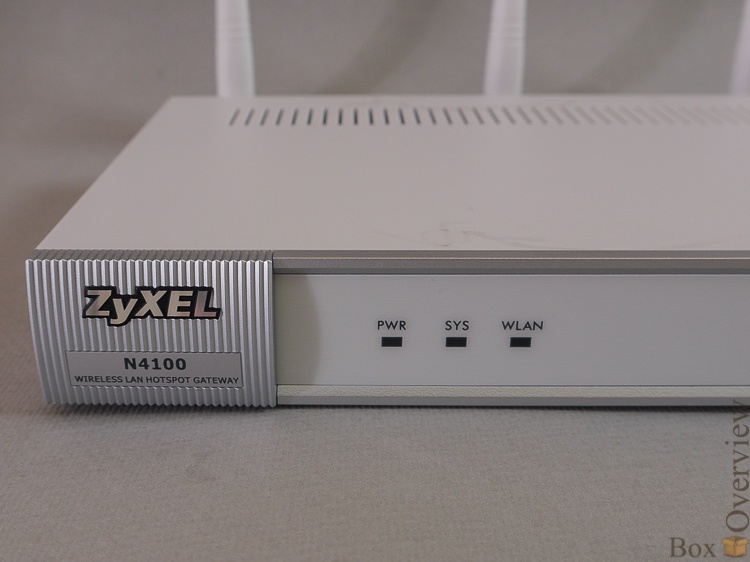
And activity ports for the corresponding ports:

On the back of the access point, everything is also standard. Three connectors for antennas:
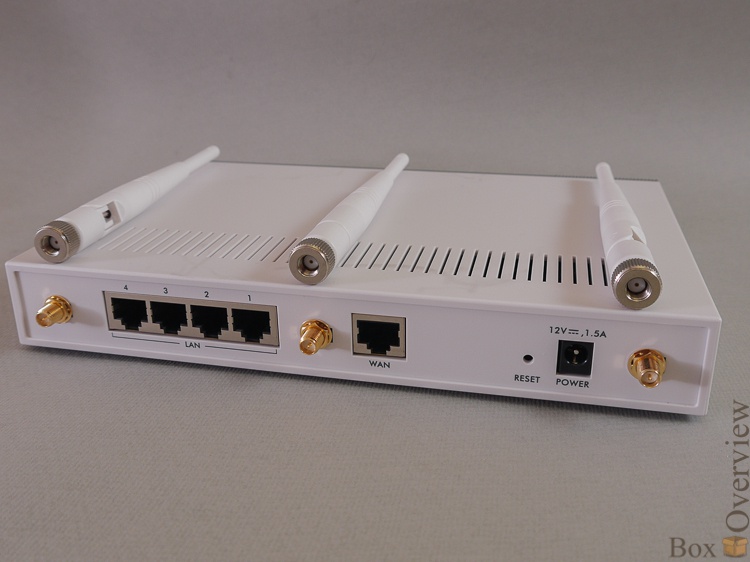
4 network ports (LAN) and one external network (WAN) port:

Reset button in the recess and the power supply connector:

Bottom - grooves for mounting on the wall, rubber feet:
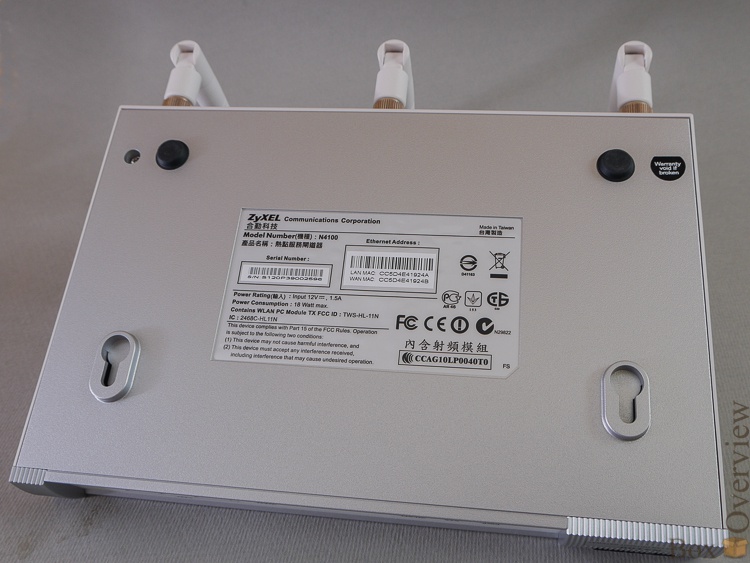
Well, the sticker, of course.

Go to the printer:

Front - three buttons that can be assigned in the configurator to different tariff plans. By pressing a button on the printer, a user account is automatically created with a predetermined Internet access time, and the printer immediately prints the login and password for this account.
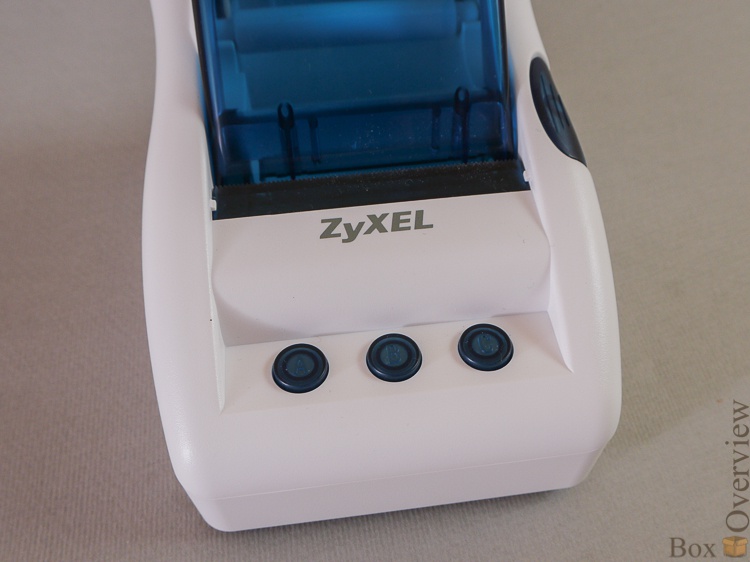
There is a latch button on the side of the printer to open the cover and change paper. The paper is the same as that used in cash registers, so there will be no problems finding it.

We open the lid by pressing:
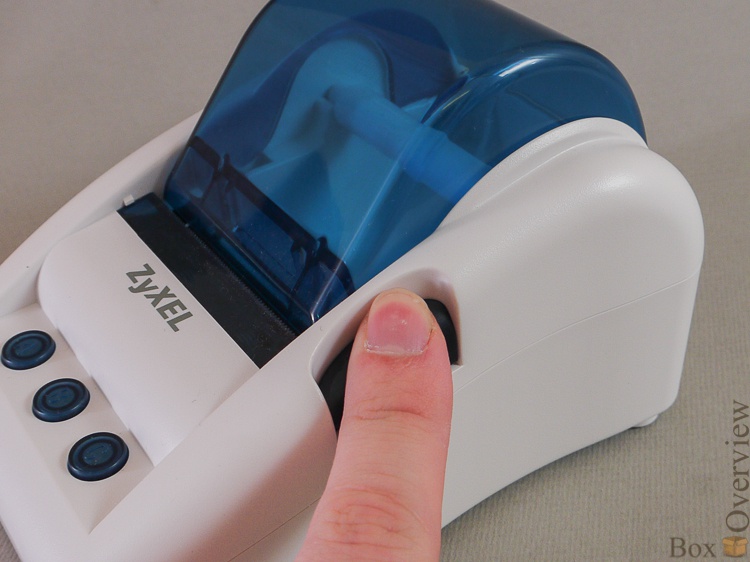
Inside the horizontal bar for the paper roll:
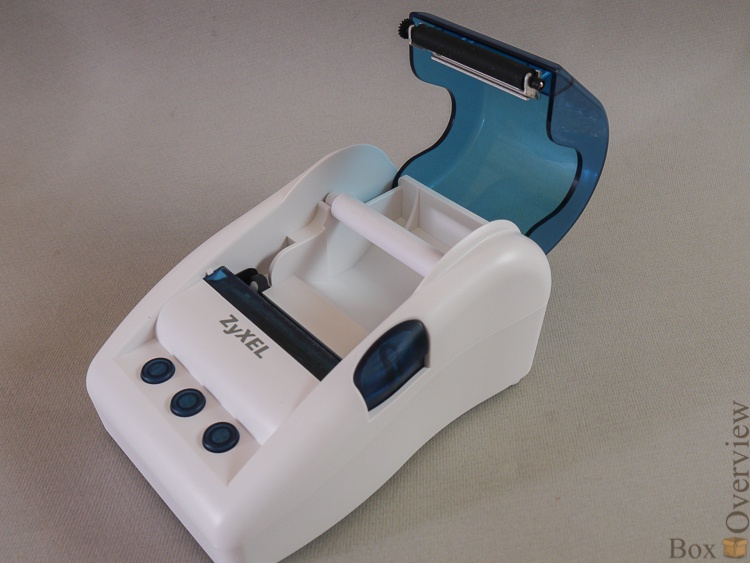
On the lid - the pressure roller:

And in the depth - the printing unit. A thin black strip on a brown background is just the thermocouple to which the paper is pressed. By heating its various sections and moving the paper, you can print text.
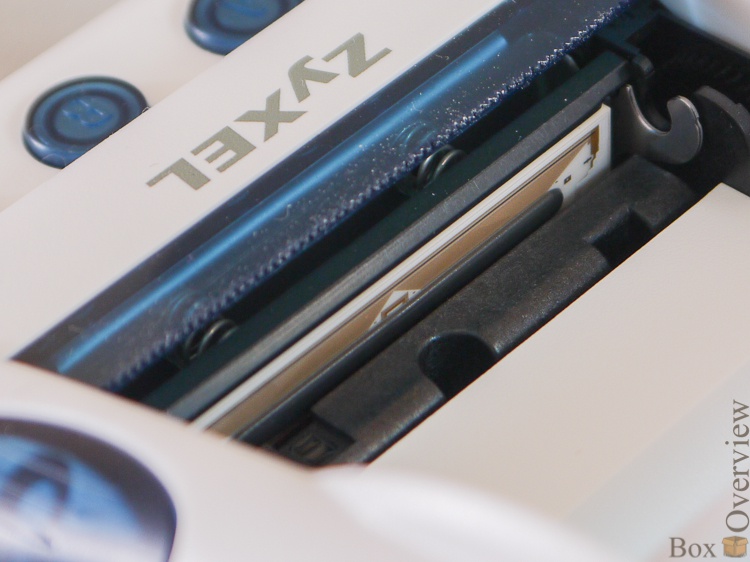
Fill the paper into the printer:

And just close the lid:

Everything for people. And then refilling paper in a different cash register is more difficult than refilling a cartridge.
On the back of the printer are located: a power connector, a reset button, a keyboard connector, and an 8P8C connector:
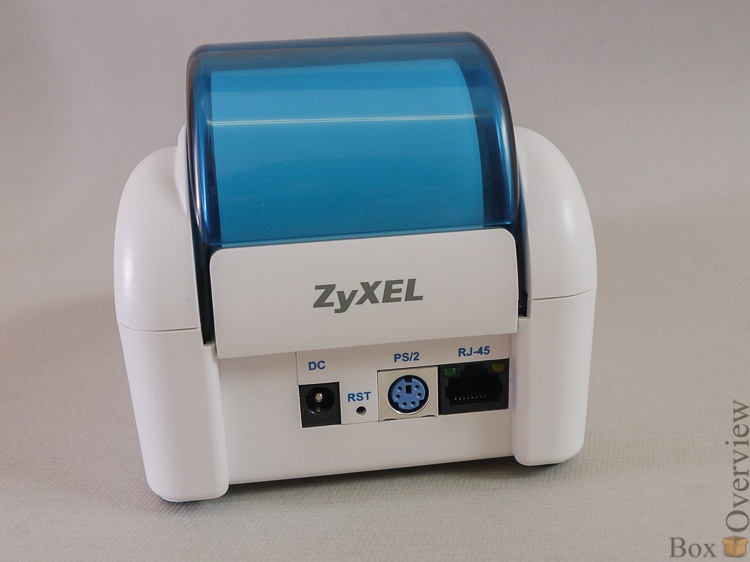
Bottom - ventilation holes and rubber feet:

And a sticker with basic information:
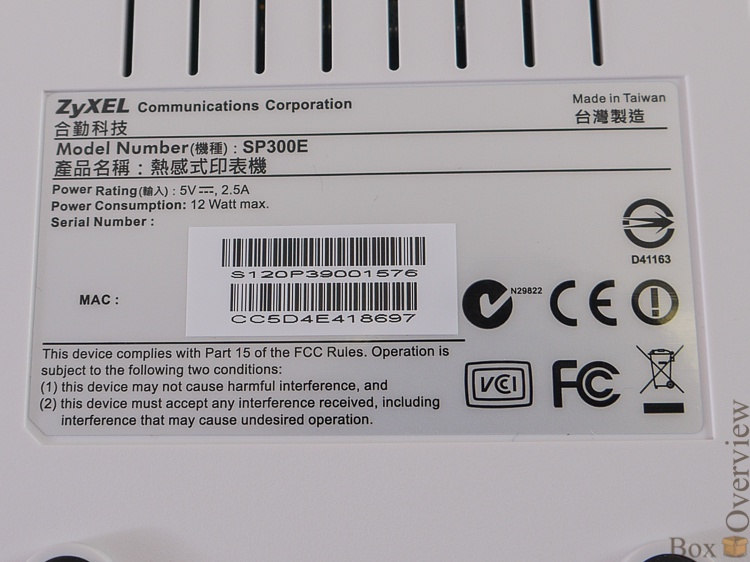
A PS / 2 connector is needed to connect an additional keyboard - in case you need there are not enough three built-in buttons.
► First start
I think there shouldn’t be any difficulties in connecting - power supplies to sockets, a printer to the access point with one cable, and the second - access point to the source of Internet technology .
We connect the cable to the LAN port of the router, or to the ZyXEL WiFi network. Go to the address 192.168.1.1 (Yes, I didn’t even open the drive. I don’t have a drive at home either.) Log in (admin: 1234) and get into the setup wizard. Choose the type of Internet access:
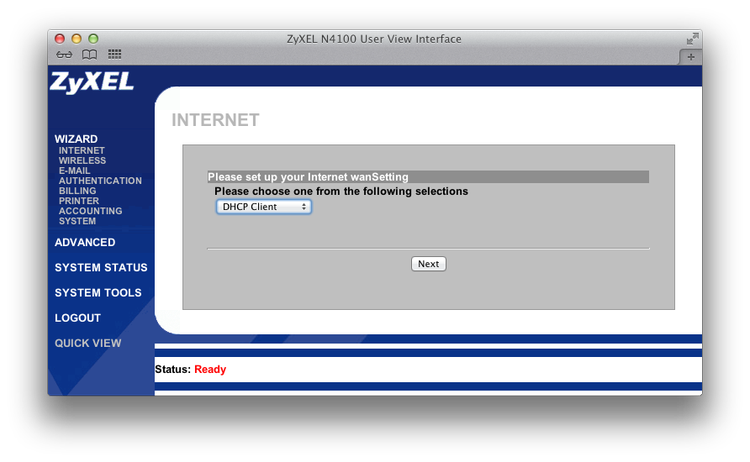
Configure the parameters of the WiFi network:
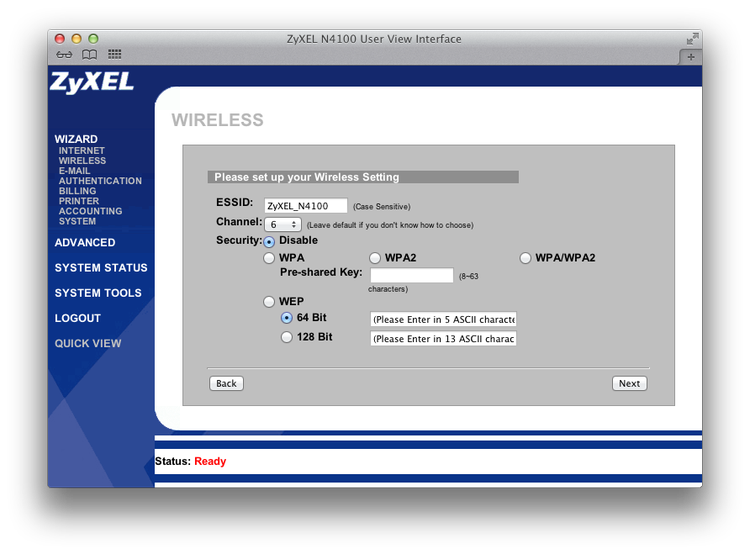
The network is open by default - the Internet is still under a password. You can configure encryption - then the printer will also print data for authorization on the network on each check.
Next, we will be asked about setting up redirects for SMTP:

And whether users should be allowed with passwords, or can all be in a row:
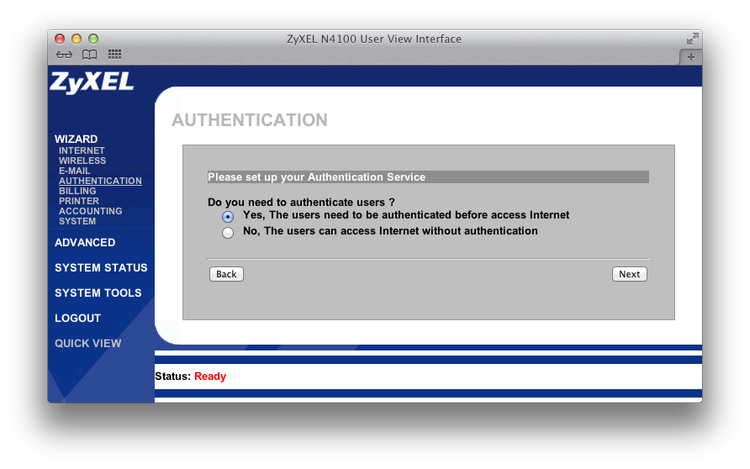
Of course, we answer yes. Here you can configure three types of accounts to be created, choosing the time and cost for each:

Next, we indicate the printer address (by default it is 192.168.1.7, but it can be found by pressing the ABC buttons one after another)

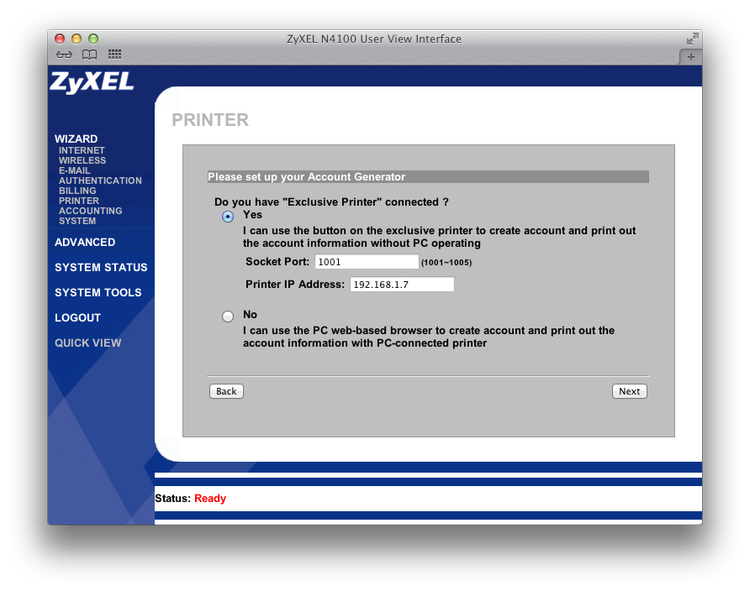
and set which button corresponds to which tariff plan configured earlier.

We change the username and password so that users can not penetrate the panel. And if desired, we prohibit access to the panel to all addresses, except for one:
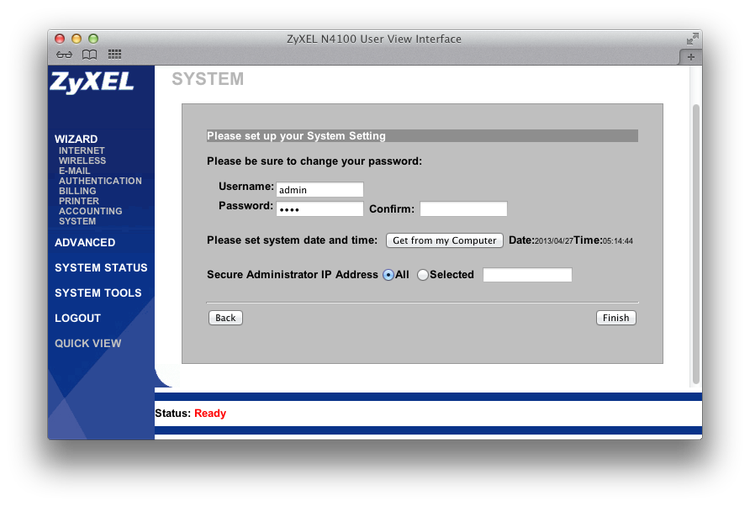
After that, the access point applies the settings and after reloading the page, you can log in with a new login and password.
Or you can press the button on the printer and print your first account:

Now, if you connect to the access point and dial any external address, they will not let you in, but they will ask you for a username and password:

Enter it from the check:
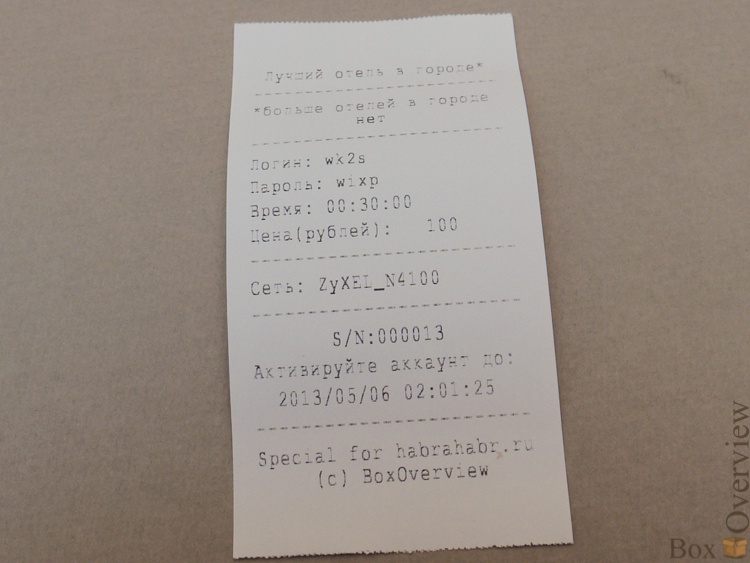
After entering the username and password, we will be pleased with the window:
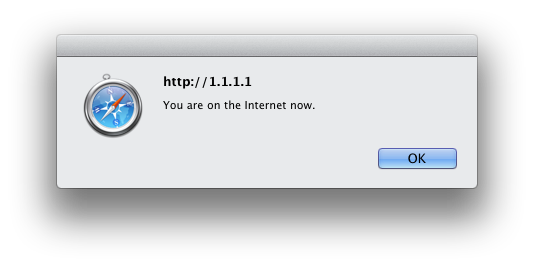
And in a separate window, information about the remaining time will open:
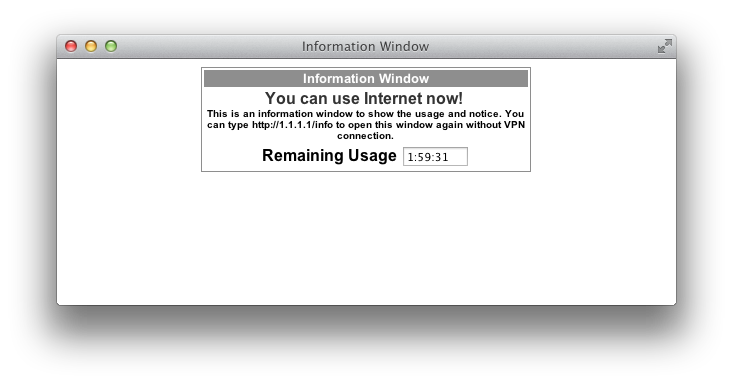
► Inside
Of course, any piece of iron that fell into my hands must be taken apart! We unscrew the two screws (one of them under the warranty sticker, but when did it stop me?)

Slide the cover and get access to the bottom of the board:

There is nothing interesting about it - only memory:
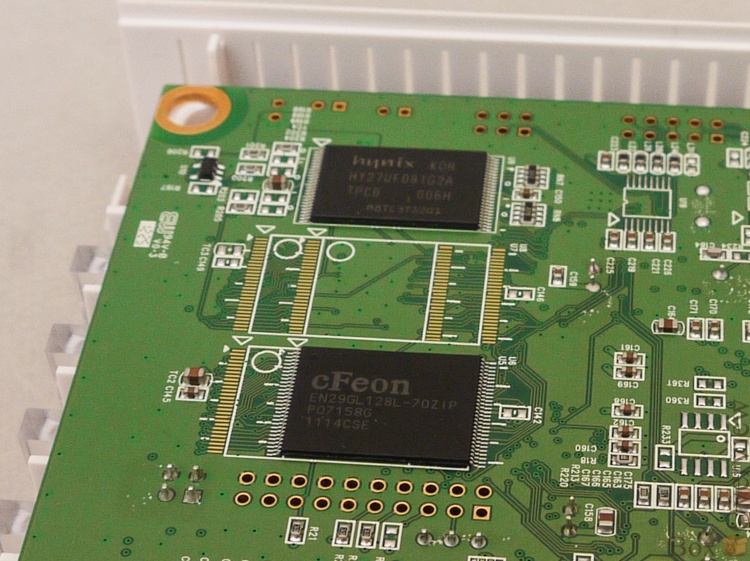
But on the back there is already:

An interesting design of optical fibers is prisms:
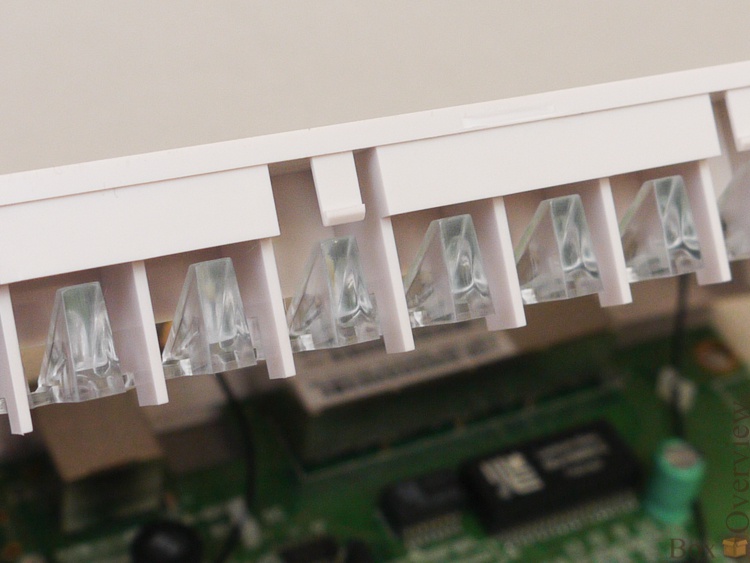
Even in places where there are no LEDs. The LEDs themselves are also cool - convex:

You can look at the Wifi module in a serious slot that looks like a PCI:

Here is its marking:

Indeed PCI. Not only are the antenna connectors glued to it:

So also it is soldered to the mounts:
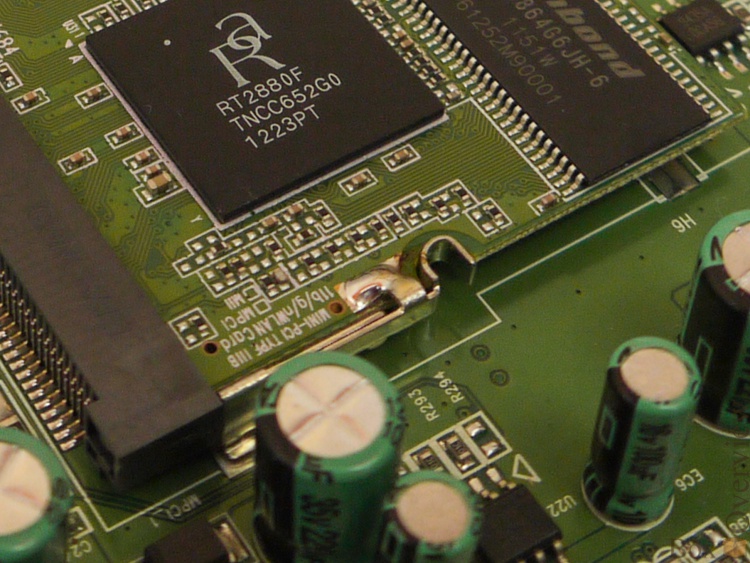
This is most likely RTC, a module that only deals with time counting. Near the battery - so that the clock does not reset when turned off. And watch quartz - I think it’s clear why.
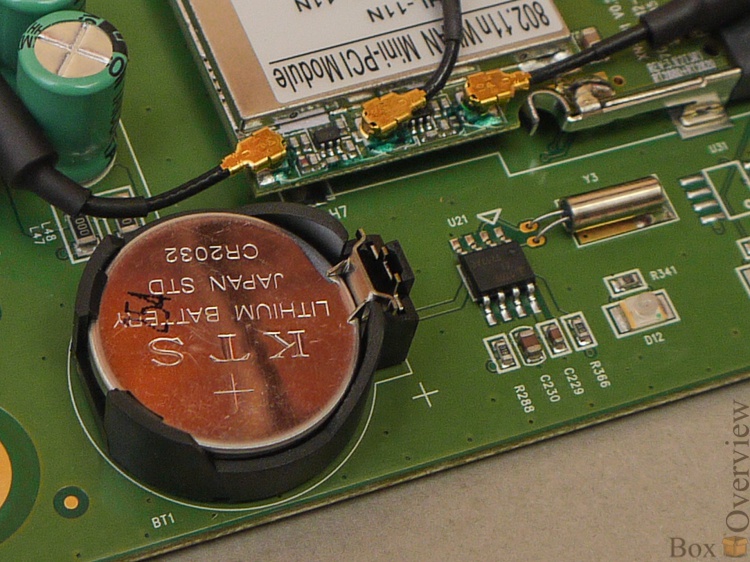
And on the top there are two unsoldered USB-connectors. Interestingly, something turned out to connect to them?

The processor heatsink is glued to it with some kind of hellish glue that I barely tear off:

And then another half an hour I cleaned it from the controller to read its marking:
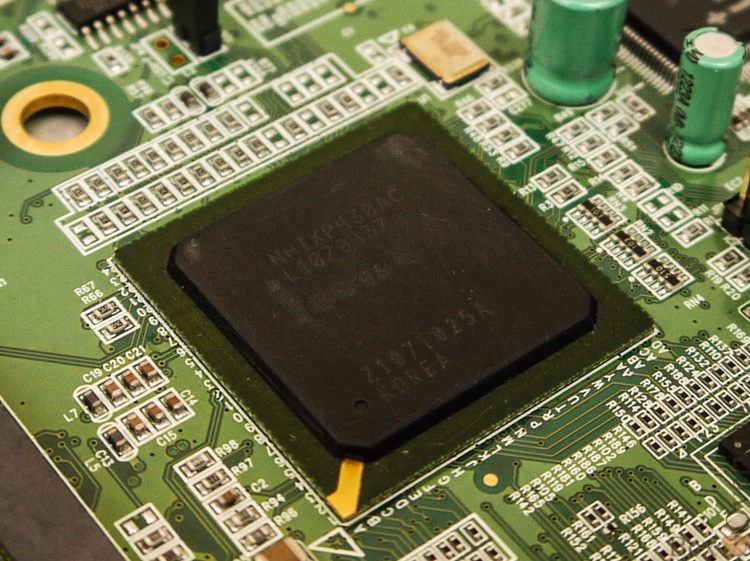
Wow. NHIXP430AC is an Intel processor with a frequency of 400MHz, specially designed for network applications. Cool.
► Price and links
At the moment, the average price for this access point is about 23 thousand rubles.
 Yandex Market Model
Yandex Market Model
 Official Site
Official Site
If you do not have an account on Habrahabr, you can read and comment on our articles on BoxOverview.com

Well, probably it’s already clear that this is not an ordinary access point, which distributes the Internet in the apartment for a laptop and phone. No, of course, it can work in this form, but it's like hammering nails with a hard drive.
N4100 is a specialized solution for organizing paid access to the Internet - a hotspot. In fact, very cool and thought out to the smallest detail. You can use this access point in any places where there are people who need access to the Internet - cafes, pizzerias, restaurants, hotels, hotels, airports, meetings of a large number of people.
The access point is supposed to connect to the Internet, and the printer to the access point. Moreover, they do not have to be directly connected - information is transmitted to the printer using standard protocols, and there can be routers or switches between the access point and the printer. Up to 10 pieces can be connected to one access point.
Well, of course, you can connect repeaters or individual access points to the router , if you do not have enough coverage.
► Zhelezyaka
The access point came to me in such a large box, which did not even fit entirely into the frame: 
Included were: Disk, instructions and wall mounts.

The instructions have a section in Russian that is good, but not very detailed, describing the first setup and activation.
Stickers ^ _ ^

Two cables:

The access point itself:

And the printer for it:

And two power supplies, of course. For the printer, at 5V:

And for the access point, at 12V:

By the way, the plugs are not the same - burning the printer by including the wrong power supply in it will not work. It's nice that this is thought out.

The power supply for the TD is with a removable plug, you rarely see this solution:

But the printer has the usual one:

But, in any case, the main thing is that the plug is correct. And there are no problems with this.
The design of the access point is quite ordinary:

On the front panel there are LEDs for power supply, system operation (lights up after boot), wireless network activity:

And activity ports for the corresponding ports:

On the back of the access point, everything is also standard. Three connectors for antennas:

4 network ports (LAN) and one external network (WAN) port:

Reset button in the recess and the power supply connector:

Bottom - grooves for mounting on the wall, rubber feet:

Well, the sticker, of course.

Go to the printer:

Front - three buttons that can be assigned in the configurator to different tariff plans. By pressing a button on the printer, a user account is automatically created with a predetermined Internet access time, and the printer immediately prints the login and password for this account.

There is a latch button on the side of the printer to open the cover and change paper. The paper is the same as that used in cash registers, so there will be no problems finding it.

We open the lid by pressing:

Inside the horizontal bar for the paper roll:

On the lid - the pressure roller:

And in the depth - the printing unit. A thin black strip on a brown background is just the thermocouple to which the paper is pressed. By heating its various sections and moving the paper, you can print text.

Fill the paper into the printer:

And just close the lid:

Everything for people. And then refilling paper in a different cash register is more difficult than refilling a cartridge.
On the back of the printer are located: a power connector, a reset button, a keyboard connector, and an 8P8C connector:

Bottom - ventilation holes and rubber feet:

And a sticker with basic information:

A PS / 2 connector is needed to connect an additional keyboard - in case you need there are not enough three built-in buttons.
► First start
I think there shouldn’t be any difficulties in connecting - power supplies to sockets, a printer to the access point with one cable, and the second - access point to the source We connect the cable to the LAN port of the router, or to the ZyXEL WiFi network. Go to the address 192.168.1.1 (Yes, I didn’t even open the drive. I don’t have a drive at home either.) Log in (admin: 1234) and get into the setup wizard. Choose the type of Internet access:

Configure the parameters of the WiFi network:

The network is open by default - the Internet is still under a password. You can configure encryption - then the printer will also print data for authorization on the network on each check.
Next, we will be asked about setting up redirects for SMTP:

And whether users should be allowed with passwords, or can all be in a row:

Of course, we answer yes. Here you can configure three types of accounts to be created, choosing the time and cost for each:

Next, we indicate the printer address (by default it is 192.168.1.7, but it can be found by pressing the ABC buttons one after another)


and set which button corresponds to which tariff plan configured earlier.

We change the username and password so that users can not penetrate the panel. And if desired, we prohibit access to the panel to all addresses, except for one:

After that, the access point applies the settings and after reloading the page, you can log in with a new login and password.
Or you can press the button on the printer and print your first account:

Now, if you connect to the access point and dial any external address, they will not let you in, but they will ask you for a username and password:

Enter it from the check:

After entering the username and password, we will be pleased with the window:

And in a separate window, information about the remaining time will open:

► Inside
Of course, any piece of iron that fell into my hands must be taken apart! We unscrew the two screws (one of them under the warranty sticker, but when did it stop me?) 
Slide the cover and get access to the bottom of the board:

There is nothing interesting about it - only memory:

But on the back there is already:

An interesting design of optical fibers is prisms:

Even in places where there are no LEDs. The LEDs themselves are also cool - convex:

You can look at the Wifi module in a serious slot that looks like a PCI:

Here is its marking:

Indeed PCI. Not only are the antenna connectors glued to it:

So also it is soldered to the mounts:

This is most likely RTC, a module that only deals with time counting. Near the battery - so that the clock does not reset when turned off. And watch quartz - I think it’s clear why.

And on the top there are two unsoldered USB-connectors. Interestingly, something turned out to connect to them?

The processor heatsink is glued to it with some kind of hellish glue that I barely tear off:

And then another half an hour I cleaned it from the controller to read its marking:

Wow. NHIXP430AC is an Intel processor with a frequency of 400MHz, specially designed for network applications. Cool.
► Price and links
At the moment, the average price for this access point is about 23 thousand rubles.  Yandex Market Model
Yandex Market Model  Official Site
Official SiteIf you do not have an account on Habrahabr, you can read and comment on our articles on BoxOverview.com
